The incredible murals of a Tsaparang, one of the “Lost Cities” of Central Asia, are housed in two prominent temples :the Marpo Lhakang (Red Temple) and the Karpo Lhakang (White Temple). Both temples contain Buddhist religious murals depicting figures such as Buddhas, complex deities and famous teachers.. Tsaparang, located in West Tibet, was the name of the capital of the ancient Guge Kingdom. It is likely that the area gained prominence in the 9th century during the dissolution of the central Tibetan kingdom. The town consists of a large fortress on top of a hill, partially standing, and the village located below.
The influence of the Guge Kingdom, particularly the monastic center of Tholing, was felt from Kashmir to Assam.
In 1624 Father Antonio del Andrade, a Portuguese Jesuit, found his way to western Tibet. Within a few years, he had made so many Catholic converts that local Buddhists became alarmed and called in the neighboring kingdom of Ladakh to drive the new Christians from Tsaparang and the surrounding area. The Ladakhis were delighted to have an excuse to invade, and the end result was that the Guge Kingdom, which had tolerated the Christians, was essentially wiped out.
In 1948 a German Buddhist monk, Lama Govinda, came to Tsaparang and Tholing with his wife, Li Gotama, and photographed everything. That is the only reason we know what the temples looked like before the arrival of the Red Guards in 1967. They destroyed many of the statues and, in Tholing, a number of buildings, before closing down the sites and leaving them to the mercy of wind and weather throughout the years of the Cultural Revolution.
That morning we had Tsaparang’s citadel to ourselves, with only the occasional hawk flying above us for company. At 14,000 feet, climbing was arduous, but the first site — the White Temple, Lhakhang Karpo — was not that far. The building is peaceful with slender, red wooden pillars ending in carved capitals, its ceiling composed of intricately painted geometric designs.
With our flashlights (a necessity, since the only illumination in the buildings is from skylights), we could make out the delicate features, fine noses and rounded chins of the Buddha statues on lotus pedestals. Two snarling guardians at the entrance, Tandrin in red and Dorje in blue — their hard lacquered exteriors damaged so that the innards of straw are exposed — are still vital in their aggressive poses. The brilliantly colored murals of gods and goddesses are rendered with great delicacy. All spaces are filled with rich painted ornamentation — animals, flowers, trees, temples, imaginary beasts.
The Red Temple, Lhakhang Marpo, a short distance up the path, is entered through its original wooden doors. In the upper left panel a carved Buddha meditates between what appear to be two angels. To the left of the entrance, below deities in billowing scarves and elaborate jewelry, are panels depicting horses carrying timber for the construction of the temple, goats with panniers of dirt and the king and queen with visiting dignitaries, assembled for the consecration of the temple. Water damage and vandalism in this chapel have been repaired with stunning ineptitude. But at least there is no confusion as to what is original and what is attempted renovation.
KAREN SWENSON – MARCH 19, 2000
The Dorje Jigje Lhakhang, a small temple farther along the path, is filled with painting of wrathful Tantric deities, but in small panels to the right of the entrance, is a scene depicting, in minute detail, people going off to market with woven baskets on their backs. Finally, at the top of the citadel, a lung-straining climb up stairs and through low-roofed tunnels, is the tiny, red Mandala Lha khang. It has no skylight. A platform in the middle of the room once was the setting for a three-dimensional mandala. Wrathful deities take up the large spaces on the wall, but beneath them are gory and macabre paintings of the eight great cemeteries of India.
Eerily illuminated by flashlight are huge, beautiful Tara frescoes—white, green, wrathful manifestations—and other icons from the Tibetan Buddhist pantheon painted on the walls. And fantastic creatures—half-beast, half-human. And then the flashlight picks up some detail that turns out to be a stunning miniature—an entire work of art in itself. The murals are breathtaking. And offer some clues about dress and customs in the long-lost kingdom of Guge. Because not everything portrayed is mythical. Really bringing Guge to life are frescoes of courtiers welcoming an important envoy, arriving by donkey. Another fresco shows a high lama giving teachings. Moving along to the Yamantaka Chapel—named after resident tantric deity, Dorje Jigje—the walls bear a quite different kind of ancient mural: sumptuous paintings of Tibetan tantric deities tangled in yabyumembraces with their consorts.
The murals date from the 16th and 17th centuries—before the fall of Guge. We will probably never know the identity of the artists at Guge—in the tradition of Tibetan Buddhism, this kind of art springs from an anonymous well. We do know that the king of Guge was wealthy enough to be able to import artisans from regions like Kashmir. But while the style may be Kashmiri, it is also distinctly Tibetan. Visiting in 1933, Italian scholar Guiseppe Tucci noted ‘an art peculiar to Guge, distinctive in itself and independent of the art movements in other parts of Tibet.’
The quality of the art, colour, composition and artistic imagination stands as some of the most beautiful works ever created in this region of the world. Although its existence had been well known from the diaries of Andrade, a Portuguese missionary who had spent several years there in the 1620s, it was only discovered in 1933/34 By Tucci. The unique old temples, the only buildings of the city that had survived its destruction in the outgoing 17th century, had been badly ransacked during the Cultural Revolution. Looking for treasures they had destroyed most clay sculptures…but the 15th century murals had survived in asmall Demchog Temple on top of the citadel (Demchog is the fierce form of Manjushri) popular in Western Tibet during the 14th to 17th century. The temple is completely dark inside with huge murals of Mandalas and Tantric Yab-Yum images on its walls. It was used for initiation rites and for that reason its imagery is highly esoteric.



